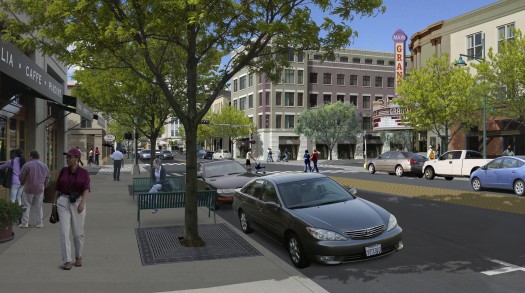Sales and Marketing
Moonshine, Basketball, and the Power of Place
Every day, social media serves up a seemingly endless stream of content. Raw information, with each item typically reflecting the priorities of its respective poster. If you’ve assembled good curators among your friends and contacts, it adds up to a lot of interesting stuff. But the real interest, at least for me, is when you…
Read MoreRetail: Walkable urban primer with southwest inspiration
A couple weeks ago, I had the great pleasure of working with Bob Gibbs in Las Cruces, New Mexico, looking at ways to help downtown outperform the suburbs, helping Main Street be more profitable than strip malls. The top lessons were to nurture unique historic character in walkable formats and don’t build leasable space that…
Read MoreMaking Sense of Community
Let’s start at the beginning. Sense of community is a legitimate thing. Or at least it was, until people like me got ahold of it. To explain: In 1986, social psychologists David W. McMillan and David M. Chavis published their theory on what they termed “sense of community” — the feeling we experience when engaged…
Read MoreSelling Urbanism: Don’t be an Aristarchus
As placemakers, we know that the challenges of the built environment require more than just new ideas — no matter how clever, unique or seemingly innovative. That was the approach of the 20th century and — no spoiler alert required — it didn’t work out all that well. In retrospect, we know now that the…
Read MoreHousing Policy Repair for a New Era: Let’s review
Since the data keep rolling in, confirming changes we should have anticipated even before the Great Recession, maybe it’s time to revisit the tasks ahead for communities if they’re to avoid flunking the tests of livability and prosperity in the 21st century. Consider: Though a narrow sliver of the population seems to have emerged from…
Read MoreGetting Stuff Done: The whole point of planning, no?
High on my list of must-read columnists is James Surowiecki of The New Yorker. His “Twilight of the Brands” piece in the February 17-24 edition provides a good example of how he takes apart outworn axioms of business success, then, from the wreckage, assembles a model better suited for the here and now.
Read MoreNew Media for Designers and Builders
Steve Mouzon’s much anticipated new book, New Media for Designers + Builders, releases today. This groovy user-intensive e-book is a road map for revising the marketing efforts of the design and construction community. The premise: Tired marketing budgets are antiquated and out of step with a post-recession world where values have shifted towards authenticity and…
Read MoreGoing Green: What is it you really want?
Last week I spent some time in the mountains of southern Virginia visiting my folks. That’s something I not only enjoy but find productive as well, as it affords me opportunity to further explain exactly what it is I do for a living. For some reason, “telling the story of community placemaking” still leaves them…
Read MoreFake, or So Real it’s Blowing Your Mind?
Okay, so the headline here is a semi-inside joke. Last week, on vacation in Rosemary Beach on the Florida panhandle, I Facebooked a photo of the town’s Main Street, together with this comment: The idea that a traditionally-planned community is somehow “fake” reflects a particular American pathology: the belief that incompetence is akin to authenticity.…
Read MoreCommunity Reputation: Actions speak
“Don’t dance, drink, smoke or chew, or go with girls who do.” If you grew up in the south, it’s a good bet you’ve heard this one before. In short, reputation is a precious thing. You may show up in church in your Sunday best but, if your actions every other day paint a different…
Read More

